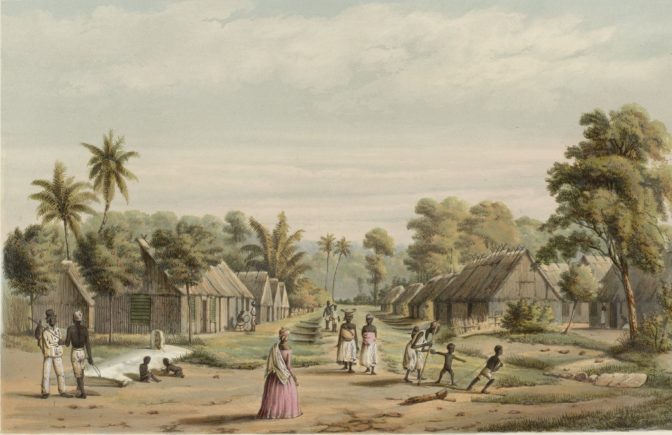If you are researching enslaved people in the former Dutch colonies like Suriname and the Netherlands Antilles, you need to trace their owners. Enslaved people created few records themselves, but their owners may have created records that mention them.
Here are some examples of records created by owners that may include enslaved people:
- Last wills, disposing of slaves or stipulating their manumission
- Estate inventories, where slaves are included as property
- Notarial records documenting the purchase or sale of slaves
- Rental agreements, where slaves are hired by other people and the owners are compensated for their labor
- Population registers, which sometimes include a tally (but not the names) of the slaves owned by the household
- Compensation records when slavery was abolished and owners were compensated by the government.
- Personal correspondence (rare) that tells about financial transactions or voyages involving slaves.

Slave camp in Suriname. Credits: Jacob Eduard van Heemskerck van Beest, collection Rijksmuseum public domain)

